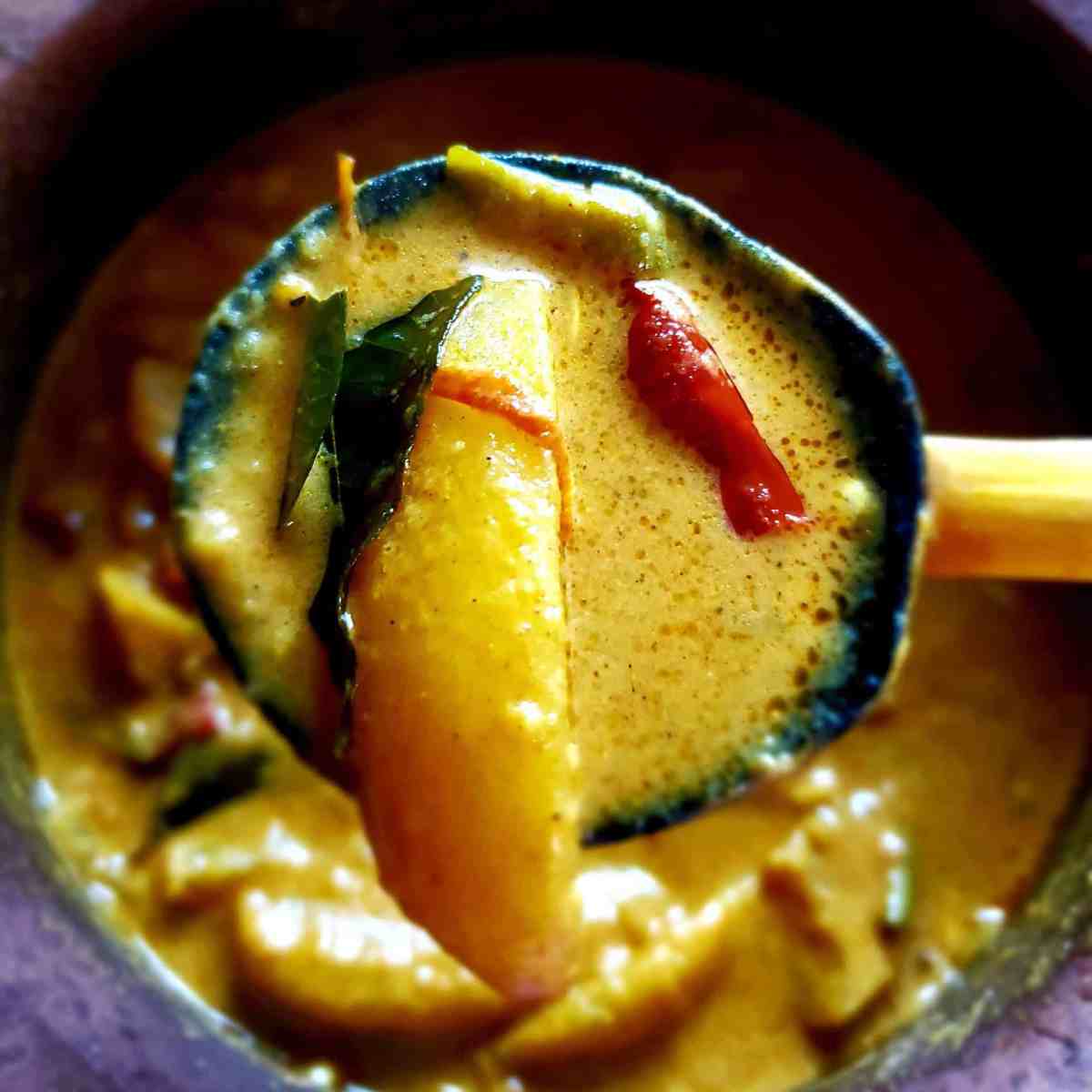Embark on a culinary adventure exploring the vibrant world of Banting curries! Imagine rich, aromatic sauces clinging to succulent meats and crisp vegetables, all while adhering to the principles of the Banting diet. This journey unveils the secrets to creating flavorful, satisfying curries that are both delicious and health-conscious, perfectly balancing taste and dietary needs. We’ll delve into the heart of Banting cuisine, exploring diverse recipes, ingredient variations, and expert tips to elevate your curry game.
From mild and creamy to fiery and intense, we’ll explore a spectrum of flavor profiles, guiding you through the selection of ideal meats, vegetables, and low-carb alternatives to traditional ingredients. Learn to master the art of spice blending, unlocking the potential for truly exceptional curries that are as visually stunning as they are delicious. Prepare to be inspired by detailed step-by-step guides and visually appealing plating suggestions, transforming your kitchen into a haven of aromatic delights.
Tips and Tricks for Delicious Banting Curries
Crafting truly exceptional Banting curries hinges on a delicate balance of flavour and texture, achieved through careful ingredient selection and precise cooking techniques. The richness and depth of flavour you desire are not accidental; they are the result of considered choices and skillful execution. This section explores key strategies to elevate your Banting curry game.
Spice Blending for Maximum Impact
The heart of any great curry lies in its spice blend. Avoid pre-ground mixes, as freshly ground spices offer a far superior aroma and flavour profile. Start with a base of warming spices like cumin, coriander, and turmeric, then layer in bolder notes such as chili powder (adjust to your preferred heat level), garam masala, and perhaps a touch of cardamom or cinnamon for complexity. Toasting the whole spices briefly in a dry pan before grinding intensifies their flavour, releasing their aromatic oils and creating a more nuanced taste. Experiment with different spice ratios to discover your signature blend; a good starting point is a 2:1:1 ratio of cumin, coriander, and turmeric, then add other spices to taste.
Ingredient Selection and Quality
The quality of your ingredients directly impacts the final flavour of your curry. Opt for fresh, high-quality vegetables like cauliflower, zucchini, bell peppers, and spinach. Choose lean protein sources like chicken breast, firm tofu, or grass-fed beef, ensuring they are appropriately trimmed of excess fat. Coconut milk is a Banting staple, but choose full-fat versions for richer creaminess. The use of quality coconut aminos or fish sauce instead of soy sauce adds a depth of umami that elevates the overall taste. Remember that even seemingly minor ingredients like fresh ginger and garlic significantly contribute to the overall flavour profile.
Cooking Methods for Optimal Texture and Flavor
Proper cooking techniques are crucial for achieving the perfect balance of textures and flavors in your Banting curry. Sautéing your aromatics (onions, garlic, ginger) before adding the spices allows their flavours to meld beautifully. Gentle simmering allows the spices to infuse the curry, creating a rich and complex flavour profile. Avoid overcooking your vegetables; aim for a tender-crisp texture. Allowing the curry to simmer gently for at least 30 minutes, even an hour, allows the flavours to deepen and fully develop. This slow cooking process is essential for achieving that rich and satisfying Banting curry experience.
Serving and Presentation
A visually appealing presentation enhances the dining experience. Serve your Banting curry in a shallow bowl, allowing the vibrant colors of the vegetables and the rich sauce to shine. Garnish generously with fresh cilantro or coriander leaves for a pop of color and freshness. A sprinkle of toasted coconut flakes adds texture and a subtle sweetness. Consider adding a dollop of plain coconut yogurt or a squeeze of lime juice for a final touch of acidity and visual appeal. Imagine a vibrant red curry with chunks of tender chicken, bright green spinach, and a scattering of golden coconut flakes, all nestled in a shallow bowl, the steam rising gently, inviting the diner to partake in a delicious and satisfying meal. The contrasting colours and textures create a visually stunning and appetizing dish.
Recipe and Step-by-Step Guide for a Signature Banting Curry

This recipe delivers a vibrant, fragrant, and intensely flavorful Banting curry, perfect for a satisfying and healthy meal. The combination of warming spices and tender chicken creates a dish that’s both comforting and sophisticated. Each step is designed to maximize flavor and texture, resulting in a curry that’s truly unforgettable.
Ingredients for Banting Chicken Tikka Masala
This recipe provides a detailed list of ingredients, ensuring you have everything you need to create this delicious and healthy Banting Chicken Tikka Masala. Precise measurements are crucial for achieving the perfect balance of flavors.
- 1.5 lbs boneless, skinless chicken breasts, cut into 1-inch cubes
- 1 large onion, finely chopped
- 2 cloves garlic, minced
- 1 inch ginger, grated
- 1 tbsp coconut oil
- 1 tsp ground cumin
- 1 tsp ground coriander
- 1/2 tsp turmeric powder
- 1/4 tsp cayenne pepper (or more, to taste)
- 1/2 tsp garam masala
- 1 (14.5 oz) can diced tomatoes, undrained
- 1 cup full-fat coconut milk
- 1/4 cup chopped cilantro, for garnish
- Salt and pepper to taste
Step-by-Step Cooking Instructions
Following these step-by-step instructions will guide you through the process of creating a perfectly balanced and flavorful Banting Chicken Tikka Masala. Pay close attention to the timing and temperature to achieve optimal results.
- Marinate the Chicken: In a bowl, combine the chicken cubes with half of the minced garlic, half of the grated ginger, half of the cumin, half of the coriander, a pinch of turmeric, a pinch of cayenne pepper, and salt and pepper. Mix well and let marinate for at least 30 minutes (longer is better). At this stage, the chicken will absorb the spices, creating a rich aroma.
- Sauté Aromatics: Heat the coconut oil in a large pan or pot over medium heat. Add the chopped onion and sauté until softened and translucent, about 5 minutes. A sweet, caramelized aroma will fill your kitchen. Add the remaining garlic and ginger and sauté for another minute until fragrant. The aroma intensifies with the addition of garlic and ginger, creating a pungent and inviting base for the curry.
- Bloom Spices: Add the remaining cumin, coriander, turmeric, cayenne pepper, and garam masala to the pan. Stir constantly for 1 minute until fragrant, being careful not to burn the spices. The spices will release their oils, creating a rich, warm, and complex aroma that fills the air with the promise of deliciousness. The color of the mixture will deepen, and the spices will become more aromatic.
- Cook the Chicken: Add the marinated chicken to the pan and cook until browned on all sides, about 5-7 minutes. The chicken will start to brown, and a savory aroma will combine with the spices.
- Simmer the Curry: Add the diced tomatoes (undrained) and coconut milk to the pan. Bring to a simmer, then reduce heat to low, cover, and cook for 15-20 minutes, or until the chicken is cooked through and the sauce has thickened slightly. The curry will develop a rich, creamy texture and a deep, complex flavor as it simmers. The aroma will become richer and more layered.
- Garnish and Serve: Stir in the chopped cilantro. Taste and adjust seasoning as needed. Serve hot with cauliflower rice or your favorite Banting-friendly side dish. The final aroma is warm, inviting, and deeply satisfying.
Recipe Adaptations
This section details how to modify the recipe to accommodate various dietary preferences and needs. Simple substitutions can transform this recipe into a delicious vegetarian or vegan dish.
Vegetarian Adaptation: Replace the chicken with 1 block (14 oz) of firm tofu, pressed and cubed. The tofu will absorb the flavors of the spices and create a hearty vegetarian alternative.
Vegan Adaptation: Use the tofu as above and omit the honey (if any was added to the marinade). Ensure your coconut milk is vegan-friendly. The result is a flavorful and satisfying vegan curry.
Mastering the art of Banting curries unlocks a world of flavor and dietary freedom. By understanding the core principles of the Banting diet and applying the techniques and recipes shared, you’ll confidently create rich, flavorful curries that satisfy your taste buds without compromising your health goals. The journey is filled with aromatic spices, vibrant colors, and the satisfying textures of perfectly cooked ingredients. So, embrace the challenge, experiment with different flavor combinations, and savor the delicious results of your culinary creativity. The vibrant world of Banting curries awaits!
Detailed FAQs
Can I use coconut milk in Banting curries?
Yes, full-fat coconut milk is a Banting-friendly option and adds richness and creaminess to curries.
Are Banting curries suitable for vegetarians/vegans?
Yes, many Banting curries can be adapted for vegetarian or vegan diets by substituting meat with vegetables like cauliflower, mushrooms, or lentils (ensure they fit your carb limits).
How do I store leftover Banting curries?
Store leftovers in an airtight container in the refrigerator for up to 3 days. Reheat gently before serving.
Can I freeze Banting curries?
Yes, Banting curries freeze well. Allow them to cool completely before freezing in airtight containers for up to 3 months.


